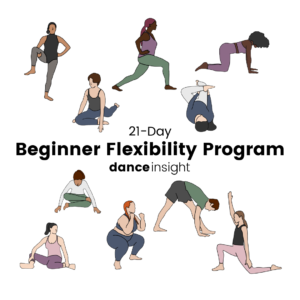
Choosing a Dance Studio
Whether you’re putting your child into dance class for the first time, moving to a new town with your teenage ballerina, or leaving your old studio for one reason or another, a lot goes into choosing a dance studio. You might need help choosing between options, or you might not even know what you’re looking for. Well, read on for advice and resources that will help you make the best decision!
What are You Looking For?
The fact that you’re reading this article shows that you’re interested in quality dance education for your child. But people have different opinions on what “quality dance education” means. Is it the program that will prepare your child for a professional career? Is it the program that will enrich your child with a love and appreciation for the arts? Is it the program with a combination of fun and discipline? Any one of these could be considered quality dance education.
If you’re new to the whole dance thing
Even if it’s your child’s first dance class ever, the program you choose is still very important. Eventually, consciously or subconsciously, your child will “choose her path” in dance. She might decide she wants to be the next Maddie Ziegler, or she might just enjoy it as an activity she can do with her friends. Both are equally valid, but once that choice is made, the program you’re in will matter. A lot.
But can’t I just switch schools if my child decides to take her dance education to the next level?
It’s not that simple. By the time your child realizes her dancing dreams, she will have already made friends in her class and gotten accustomed to the way things run at your current studio. You don’t want to make your ten-year-old choose between friends and career.
The first thing you need to ask yourself when finding a dance studio for your child is this:
Do I want my child to have the option of pursuing a professional career, without switching studios, when she’s old enough to make that decision?
Now you know what you’re looking for.
If your child has been dancing for awhile
If your child’s been dancing for awhile, she can be part of the decision-making process. This is an opportunity to choose a studio that puts her on track to accomplish her goals, or one where she can just have fun without all the pressure. Have a conversation about where she sees herself going with dance. It’s okay if she doesn’t know yet. The future isn’t usually at the forefront of kids’ minds. The outcome of that conversation will help you know what you’re looking for.
Things to Look For No Matter What
A safe facility. Visit the studio you’re considering in person and look around. Is the building in good repair? Is there mold on the ceiling? Ask about the flooring in the studios. If the studio floor isn’t “sprung” or “cushioned,” anyone dancing there will be at risk of shin splints and other injuries.
A friendly environment. Strike up a conversation with some of the parents in the lobby while your child is trying out a class. Are they welcoming? Do they have good things to say about the studio and the teachers? Did you hear them gossiping about other parents/students before you spoke up?
Pointe Readiness Evaluation. Whether your child wants to be a professional or not, she may want to go on pointe someday. Going on pointe before the feet have reached the proper stage of growth, or before the student has reached a certain level of technique, can lead to serious injury. Putting kids on pointe before age 12 is a huge red flag. A slightly smaller red flag is if the students go on pointe as a class, not individually. The ideal answer to “how do you assess students for pointe readiness?” is, “Beginning at age 12, we assess the technical abilities of each student individually. If their technique is strong enough for pointe work, we require them to be assessed by a doctor before they begin pointe training.”
Fair pricing. Dance training is expensive. Studios with very qualified instructors can charge more than recreational studios, but they should always have the pocketbooks of the families as a priority. Look for things like second class discounts, family maxes, early registration discounts, and the option to pay by month or for the full year.
What to Look For: Recreational Studios
A variety of class offerings. Ballet, tap, jazz, musical theatre, hip hop, acro, contemporary, modern. There are lots of dance styles to choose from! A studio with lots of class offerings will give your child the opportunity to branch out and find her niche.
Performance opportunities. Most studios have a spring recital at the end of the school year, but what else is available? Do they put on a Nutcracker or participate in local parades? Do they have a company that travels to perform or compete?
What to Look For: Pre-Professional Studios
Instructor credentials. Read the instructor bios on the studio’s website. Even if you don’t know much about dance, this can give you great insight into the quality of education that your child will be receiving. Do any of the instructors hold a college degree in dance? Have they had professional performance experience? Do they hold any certifications? (Degrees in education are a huge plus as well.)
Alumni success stories. If a dance studio has had alumni go on to do great things, they’ll usually advertise it. But even if they don’t, you should still ask when you visit. Have graduates of this studio gone on to study dance in college? Have they gotten into professional companies or trainee programs? Have they become successful choreographers or teachers?
A very organized level system. How do students progress from one level to the next? Are they individually assessed or do they just move up by default? Does the studio hold to a structured syllabus or do different teachers use different curricula?
An area of focus. Typically a pre-professional dance studio will focus on either ballet or “commercial dance” (jazz, hip hop, and contemporary). It’s okay if the studio you’re considering offers many styles, but they should have a clear type of dancer that they’re trying to train. A ballet studio should let advanced students take ballet at least five days a week, and intermediate students at least three or four days a week. A commercial studio should have an acclaimed competition team, with qualified instructors in many genres (including ballet).
Class size. The ideal class size for dance is debated, but I would say you want something in the middle of the spectrum. Classes of six or less will offer lots of individual attention, but if that’s the average class size at the studio, there’s probably a reason for it. (Can’t compete with other studios in the area, for example.) However, in classes of 12-14 or more, space will be tight, and students probably won’t get much individual attention. Some teachers are really good at that, but I know when I teach a class that big, I tend to give more general corrections.
Best of luck in your studio search! Ask any questions you have in the comments below!







